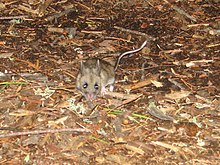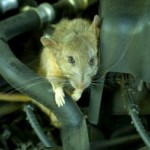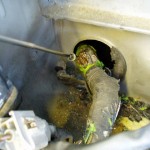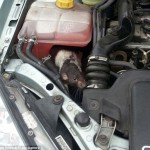Mice & Deer Mice Removal MN
If you live in Minnesota, I don’t have to tell you this winter has brought some pretty brutal weather. In fact, according to a recent report by NASA’s power robot rover Curiosity, temperatures have actually been colder than highs recorded on the surface of Mars. Cold enough for ya? Yikes!
The coldest weather in two decades has everyone scurrying indoors. Well guess what, you and your family aren’t the only ones trying to hide from the freezing weather. Just as we prefer to bundle up indoors, insects, mice, and rodents like to find warmth and shelter however they can. Often this means creeping inside well-insulated homes for the winter. Umm… maybe your home! All they need is a home with plenty of food, water, and a place to crash. And your house will do just fine!
Unlike insects, mice, deer mice, and other rodents are not capable of going dormant for the winter, but will escape the coldest weather in torpor. Deer mice can be especially problematic in heavily wooded areas. The two most common species of deer mice are the deer mouse, Peromyscus maniculatus, and the white-footed mouse, Peromyscus leucopus. However, it is important to distinguish between deer mice and common house mice because the controls and tactics used by wild animal removal professionals to resolve these rodent infestations are different as well.
Field mice and the common house mouse, Mus musculus, are distant relatives with little in common other than both being rodents. The rodent family is exceptionally large with over 4,000 species. In fact, there are more species of rodents than there are of all other mammals combined. They include beavers, chipmunks, mice, porcupines, rats, and squirrels. Rodents breed so swiftly that they would soon overrun the earth if they were not the prey of almost all flesh-eaters. Other animals such as moles, rabbits, gophers, snakes, mice, and other rodents can wreck some serious havoc to your property.
The white-footed deer mouse can be distinguished from other mice by their striking bicolor pattern. It has a light brown to black with a white underbelly from the tip of the long tail to the tip of the chin. Slightly larger than the house mouse, it has bigger ears and eyes. In addition, the tail on the house mouse has almost no fur on it, whereas the tail of the deer mouse is moderately to well furred and is light underneath and dark on top. These mice are commonly found in forested areas living inside burrows, logs, stumps or wood piles, under rocks, or in hollows in trees.

The name “deer mice” was coined in reference to their agility. They are much more energetic rodents compared to the relatively tame house mouse. Deer mice are also amazing climbers and can run up any rough vertical surface. They will run horizontally along wire cables or ropes and can jump up 13 inches from the floor onto a flat surface. They can slip through a crack that a pencil will fit into (slightly larger than 1/4 inch in diameter).

The deer mouse is nocturnal, and is most active at twilight. Winter activity takes place mainly under snow rather than on its surface. Deer mice rarely leave their homes during the day, but feed opportunistically at night on whatever is available: seeds, nuts, fruit, berries, insects and other animal matter, and whatever they find tasty.
When the pickings get slim, any place in and around your home is fair game. Including your vehicle. If you don’t have a mouse-proof garage for your car, you may be in for some trouble too. A warm engine compartment or a dark secure area in car is an enticing place for a mouse or rodent to build a nest. In fact, the damage done to vehicles by mice, deer mice, and their many cousins can be considerable.
Mice in your car can be extremely worrisome. Beyond the “icky” factor, mice can chew holes in upholstery, leave droppings all over your vehicle, and most worrying, and chew through essential wires and hoses. The result can be dangerous – electrical shorts and fuel leaks – and expensive. I’ve read accounts of folks spending over a thousand dollars because mice built a nest in a hard-to-reach part of an engine.
- Mice/Rodent Damage
- Vehicle damage from mice & rodents
The last thing you want is any kind of mouse in your home or you vehicle this winter. The best way to prevent mice from choosing your house as their nesting ground is to seal all holes and keep food out of sight. If they don’t have anything to munch on, they’ll keep moving on. But if you’ve done all that you can, and mice still seem to be finding a way into your home or garage, don’t wait. Call a professional a Minnesota Wild Animal Removal Expert to come out and inspect your home. They can identify what type of rodents you may have, eliminate and sanitize any infestation, and take preventative steps to ensure your home is pest free as well repair any of the damage they may have caused.






